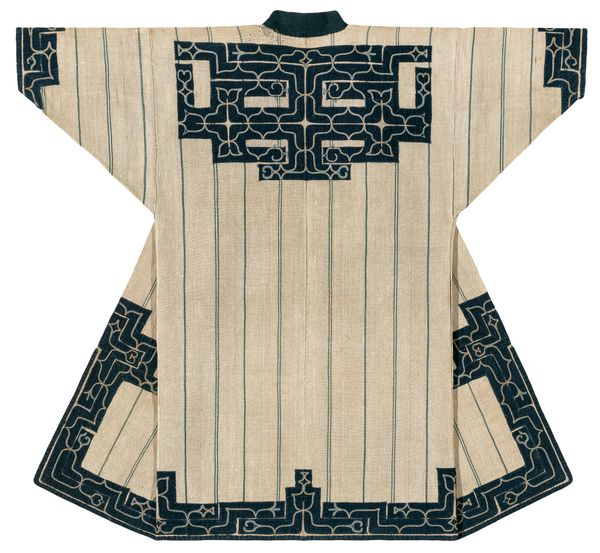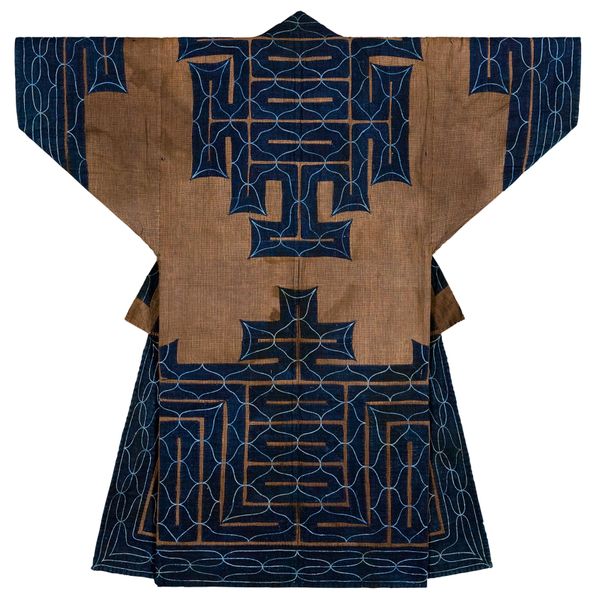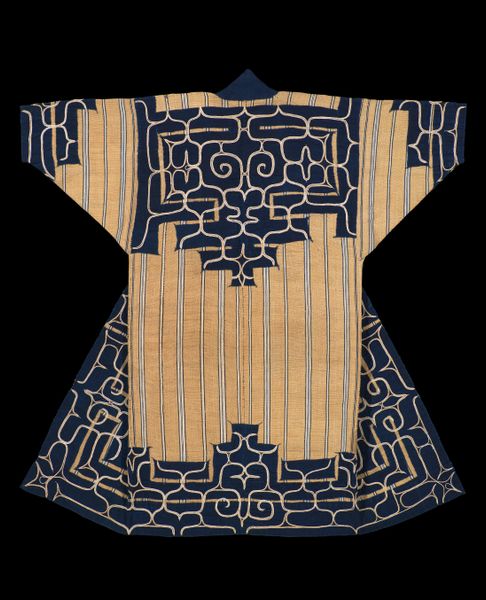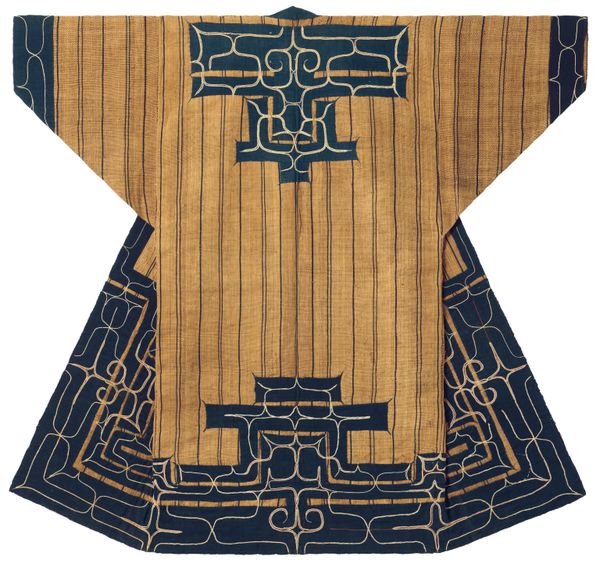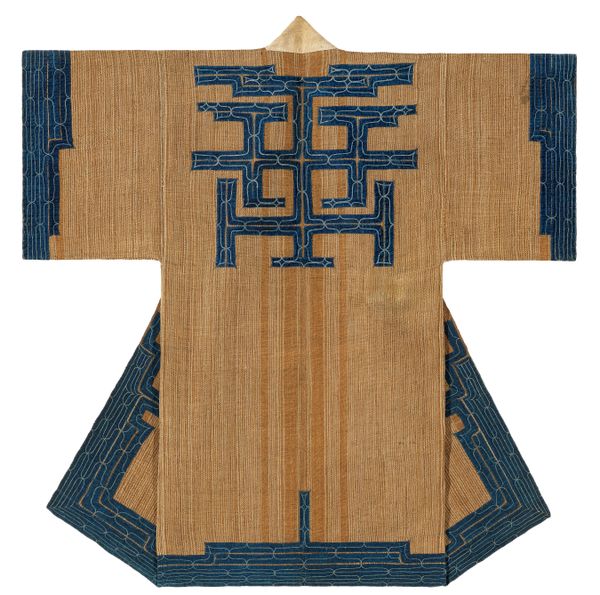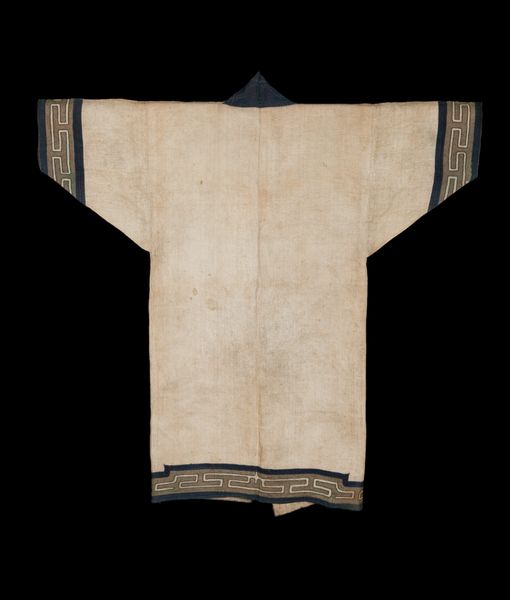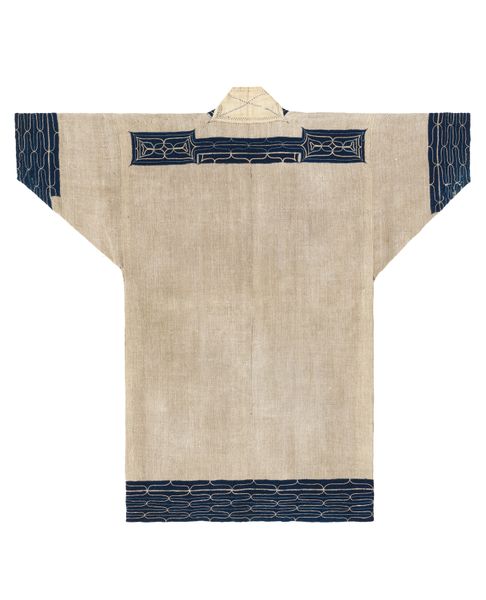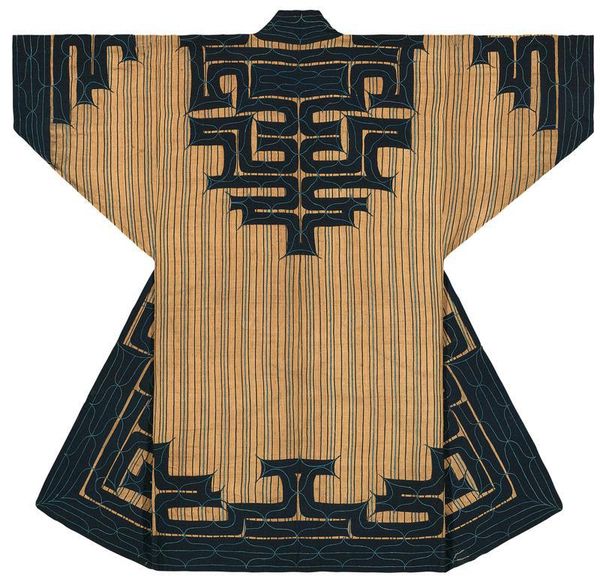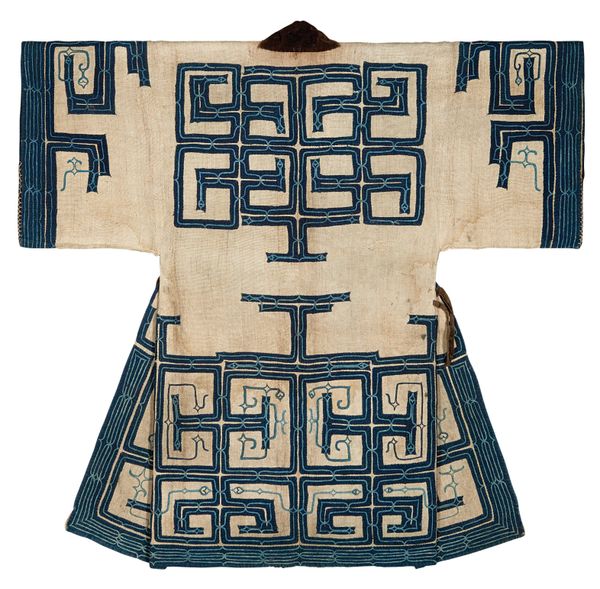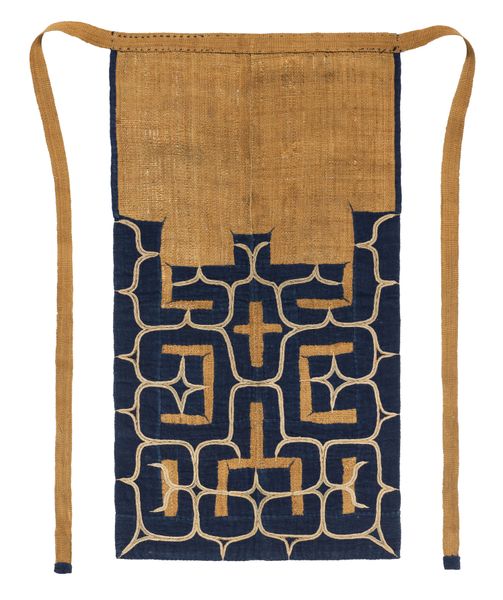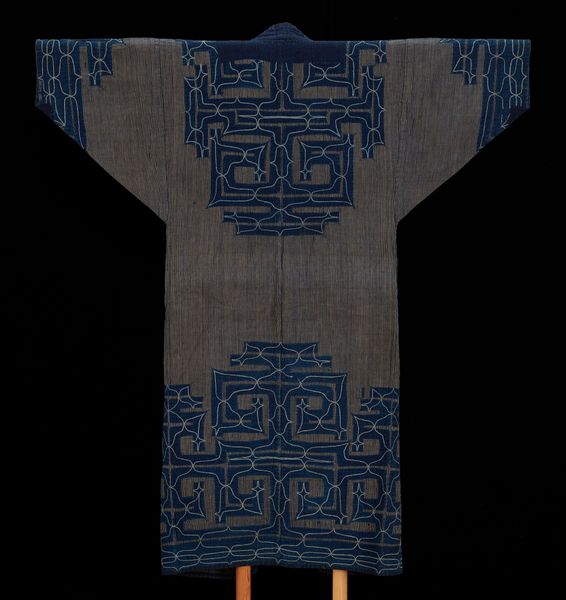
fibre-art, weaving, textile
#
pattern heavy
#
fibre-art
#
weaving
#
textile
#
fashion and textile design
#
pattern design
#
repetitive shape and pattern
#
fabric design
#
repetition of pattern
#
pattern repetition
#
textile design
#
imprinted textile
#
layered pattern
Dimensions: 45 1/2 × 47 3/4 in. (115.57 × 121.29 cm) (overall)
Copyright: Public Domain
Editor: Here we have what's described as an "Attush robe," a textile piece dating to the mid-19th century, currently housed at the Minneapolis Institute of Art. It's quite striking – a creamy, textured fabric overlaid with these bold, almost architectural blue patterns. What cultural context informs its design? Curator: This robe presents a fascinating interplay between tradition and cultural exchange. Garments like these, made by the Ainu people of Japan, are often viewed through the lens of colonial encounters and trade. How do you interpret the geometric designs and their placement on the robe itself? Editor: They seem very deliberate, perhaps indicating status, a bit like heraldry. Curator: Exactly! Historians see these textiles not just as beautiful objects, but as active participants in cultural dialogues. The Ainu people incorporated foreign design elements into their textiles, negotiating their own cultural identity. What effect might creating or wearing it have had on individuals or the wider community? Editor: Perhaps, resistance to being absorbed, retaining uniqueness, showing respect to tradition but not being restricted to the past, so not repeating cultural items from the past but actually creating something original. So, the piece itself is a statement. It's interesting how this garment challenges straightforward categorization, resisting colonial narratives by asserting its distinct Ainu identity while engaging with external influences. Curator: It's also fascinating how institutions then collect, display, and interpret them; are museums today amplifying indigenous voices and giving objects the respect they deserve? That Attush robe is definitely far more than just decoration. Editor: This conversation really broadens how one might "read" a work of art, thank you!
Comments
No comments
Be the first to comment and join the conversation on the ultimate creative platform.


